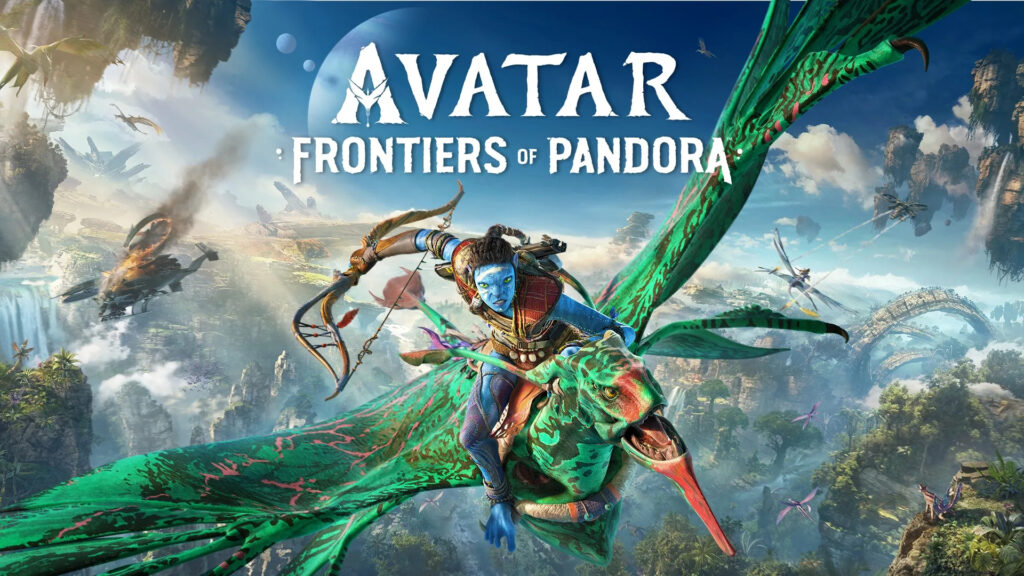
If you’re a die-hard fan of Avatar, you probably fondly recall the iconic game released in 2009. I, too, was captivated by the enchanting world of Pandora over a decade ago. Surprisingly, Ubisoft has revisited the franchise after years of silence with the release of Avatar: Frontiers of Pandora, following the prior success of Avatar: The Way of Water.
However, there’s a notable shift this time around. While the 2009 title was a remarkable but non-canonical addition, the new game aims for a truer representation of the beloved universe. Frontiers of Pandora boasts a canonical story, promising a fresh Pandora experience for fans.
Thanks to Ubisoft’s generosity in providing a copy, I’ve had the pleasure of exploring the lush landscapes of this mesmerizing planet for weeks. After immersing myself in the vibrant world of Pandora once again, here’s my take on the game.
Take Back Pandora
Avatar: Frontiers of Pandora unfolds within the timeline of James Cameron’s directed movie. As Jake Sully and his allies confront the returning RDA forces across Pandora, players, alongside their resistance fighters, are engaged in a separate struggle against the RDA in a distinct location, which serves as the game’s backdrop.
Introducing the Western Frontier, a previously unexplored region of Pandora in the movies, the game provides a unique glimpse into the lives of three different clans situated at three distinct locations. These clans, cautious about confronting the RDA directly, have chosen to distance themselves from the ongoing turmoil.

Here’s where the player, a Na’vi, takes center stage. Raised by the RDA through their TAP (The Ambassador Program) after being orphaned, the player is entrusted with the mission of uniting the three clans. Their goal is to eradicate RDA influence from the region and reclaim the land that rightfully belongs to them. The narrative mirrors the quintessential Avatar movie experience, reminiscent of the themes explored in the first two films.
The storyline closely aligns with prevalent themes, particularly addressing the consequences of industrialization and its detrimental impact on nature. This theme is seamlessly integrated into the gameplay, a feature we’ll delve into shortly. Throughout the narrative, the game also delves into profound themes of colonization and the rights of the indigenous population.
The narrative of the Na’vi and resistance fighters collaborating to reclaim their planet resonated strongly with me. It’s evident that Ubisoft took an idea conceived by James Cameron and executed it admirably, capturing the essence of the movies while infusing a new level of enjoyment.
As a dedicated fan of the series, this was precisely what I anticipated. The game manages to preserve the charm of the Avatar universe while introducing fresh elements that add to the overall experience.
A Brand-New Cast of Characters Shines Bright
To infuse weight and variety into the storyline, Avatar: Frontiers of Pandora introduces a fresh set of characters to the universe. Each character adds an interesting and enjoyable dimension to the narrative. At the heart of the action is the player character, a Na’vi, whose customization options allow for a personalized experience.
The voice acting for the characters is commendable. Depending on the chosen voice, the tone and mannerisms of the character adjust accordingly. While it may not completely captivate your attention, it’s the subtleties that make the main character endearing. These nuances are brought to life through engaging dialogues and a variety of animations, contributing to the character’s charm.
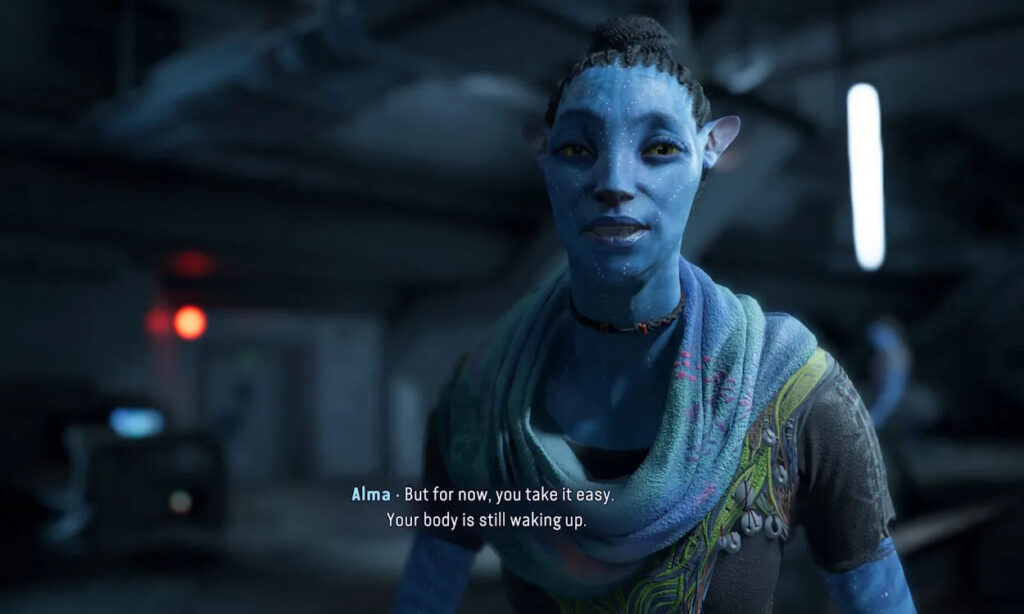
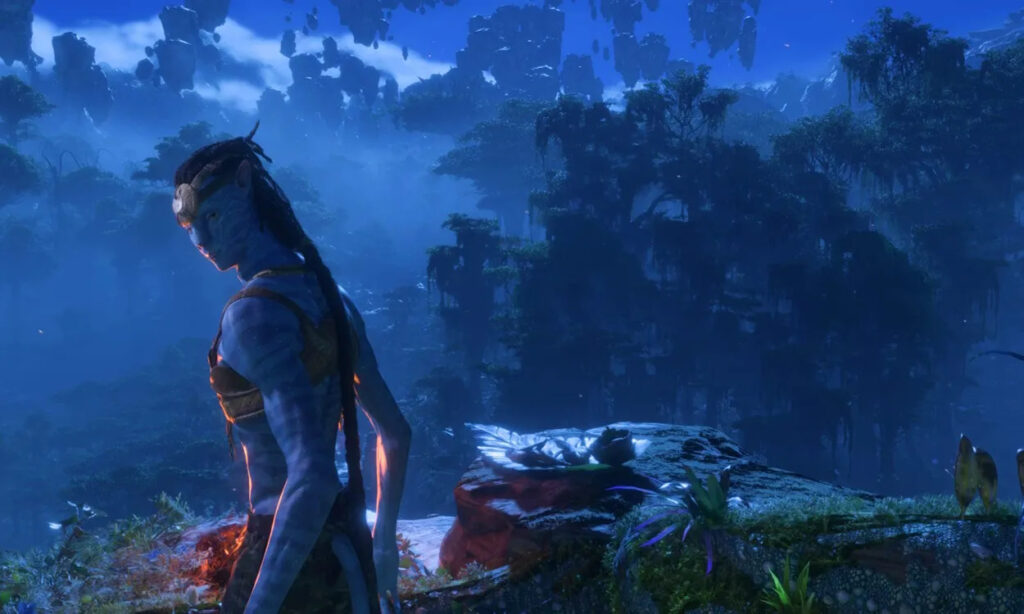
For example, the player character exudes sheer delight when riding their Ikran, and the subtle motions they make while interacting with the flowers add depth to their personality. These small details contribute to fleshing out the character and depicting their life on Pandora convincingly.
Likewise, the supporting cast plays a crucial role in advancing the narrative. Fellow TAP members deliver stellar performances, and key members from the three clans bring diverse personalities to the forefront, enriching the overall storytelling experience.
The cast of characters in Avatar: Frontiers of Pandora distinguishes itself from recent Ubisoft releases in a positive manner. However, it’s not without its flaws. The fellow Na’vi and human resistance fighter NPCs come off as somewhat dull and lifeless, lacking a sense of purpose beyond providing quests.
This issue extends to the RDA villains and grunts as well. The main antagonists, John Mercer and Angela Harding, exhibit opposing personalities. While John Mercer is portrayed as shrewd and unlikable, Angela Harding comes across as a stoic individual with acting that feels somewhat robotic and unconvincing. Despite these shortcomings, the overall character ensemble manages to contribute to the game’s immersive experience.


Although the portrayal of main and supporting characters aligns well with their personalities, the same cannot be said for the other grunts who come across as lifeless cannon fodder. They often stand around with repetitive canned lines, lacking the depth seen in the more central characters.
Ubisoft excelled in crafting a compelling main and supporting cast, but the same level of attention didn’t extend to other NPCs. If this level of care were applied universally, the world of Frontiers of Pandora could have felt significantly more likable and lifelike. Presently, it falls just short of achieving that mark, though not by a considerable margin. While the story presents a solid offering from Ubisoft, the gameplay elicits a mix of positive and ambivalent feelings.
Gameplay: Explore and Mesmerise Yourself
The gameplay in Frontiers of Pandora shares similarities with previous Ubisoft titles, particularly drawing inspiration from the Far Cry series. However, it takes a more pronounced turn toward exploration. Recent Ubisoft games have tended to heavily guide players, inundating the screen and UI with visual aids.
In contrast, Avatar: Frontiers of Pandora adopts a more minimalistic approach to the in-game HUD. Players are given the choice at the beginning of the game to opt for quest guidance or to tackle challenges independently. This choice reflects a departure from the trend of extensive handholding seen in other recent Ubisoft titles.

Whether you choose the guided or minimal approach to questing in Frontiers of Pandora, the UI elements and guidance remain unobtrusive, avoiding an overwhelming display of prompts. Opting for minimal guidance turns the game into a puzzle-like experience, offering a general direction and leaving players to figure out the exact location of quests or items. This emphasis on exploration becomes a fundamental gameplay mechanic, catering to those who appreciate simplicity.
As you traverse the map of the Western Frontier and gradually explore the three distinct locations, there are multiple means of travel available, including on foot, riding your Ikran, or utilizing temporary Direhorses. While Direhorses may not be particularly spectacular, the Ikran proves to be a delightful companion for traversing the expansive landscapes, allowing you to cover more ground in the later stages of the game once unlocked.

Exploration is not limited to the broader map but extends to hunting and foraging as well. The Hunter’s Guide, reminiscent of the Pandorapedia from the 2009 game, serves as a comprehensive record of all the flora and fauna encountered. Unlike the game’s map, the Hunter’s Guide doesn’t automatically mark your discoveries. Instead, players must actively track and pin them on the map. This deliberate lack of handholding reinforces the game’s emphasis on self-driven exploration.
Hunting and foraging for edibles align with this ethos, requiring players to personally engage in these activities to supplement armor and food. This hands-on approach further contributes to the immersive and self-directed nature of the gameplay in Avatar: Frontiers of Pandora.
Deck out Your Na’vi with the Top-tier Arsenal and Foods
At its core, Avatar: Frontiers of Pandora adopts a lite-RPG approach, incorporating gears that influence your player character’s performance and providing temporary boosts to enhance abilities. The game introduces a crafting system where players can cook food and create new Na’vi attire.
The prepared foods serve a dual purpose: replenishing your food meter, which automatically restores health, and offering temporary buffs such as improved stealth, damage, and elemental damage resistance. To create these consumables, players utilize resources collected from hunting and exploration at various bases scattered across Pandora.

On the flip side, there are armor pieces obtainable by crafting them from parts hunted or items foraged within Pandora. Side quests also offer opportunities to acquire these items. The armor consists of five pieces, each serving as an individual component. Every piece of armor is assigned a power level and features gameplay modifiers, such as a percentage increase in damage, enhanced protection from wildlife damage, and more.
While both systems encourage extensive exploration of the game world, it occasionally transforms the experience into a bit of a chore. This stems from a straightforward reason: the missions are level-gated.
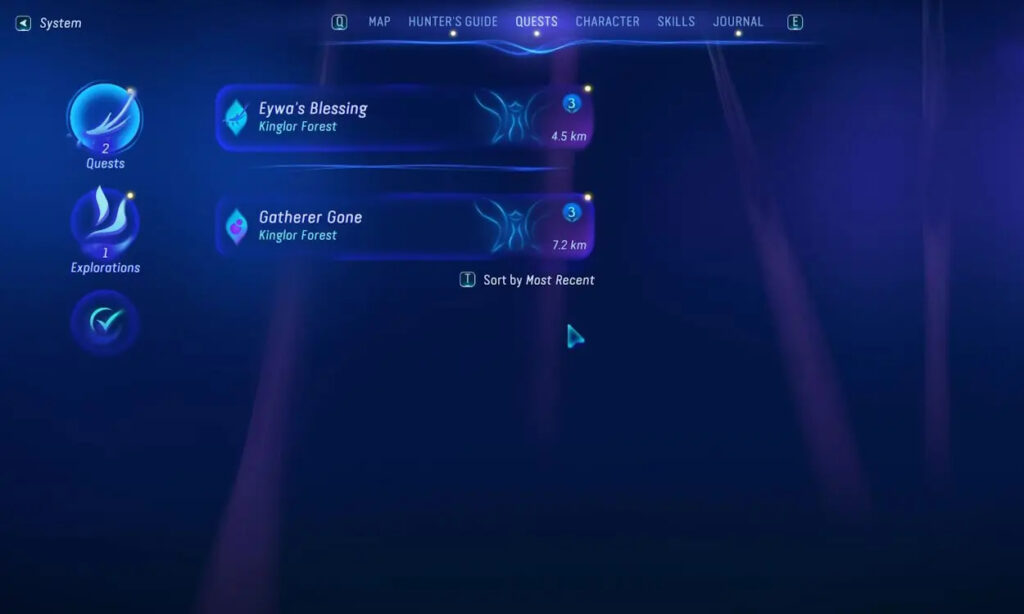
While you can opt to ignore the cooking aspect and stick to standard food, the armor becomes a crucial component. These armor pieces contribute to raising your overall character level, enabling you to tackle upcoming missions, including key story missions. Occasionally, this can lead to feelings of frustration. There were multiple occasions where I found myself compelled to craft armor solely to boost my overall level.
While I appreciate the introduction of RPG elements in the 2023 Avatar game, it feels like an aspect that could have been refined for a smoother player experience.
Improve Your Na’Vi and Pandora Air Quality
Fortunately, if foraging and hunting become monotonous and frustrating, Avatar: Frontiers of Pandora provides a welcome distraction with a handful of side activities intricately tied to the game’s narrative. One such activity involves liberating large RDA extraction bases.
These mini-games allow players to infiltrate the base using either stealth or a guns-blazing approach. Successfully liberating a base transforms that specific area of Pandora into a lush and green environment, providing the opportunity to collect flora. This mechanic felt familiar and comforting, reminiscent of the outpost liberations seen in the Far Cry games.
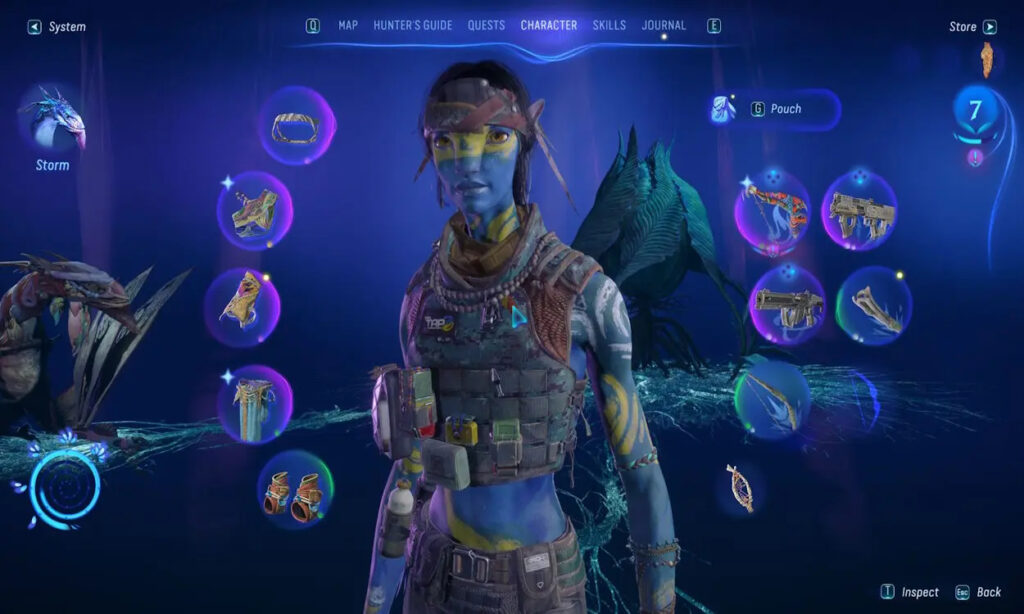
Beyond the RDA facilities, the game offers a limited array of activities. Abandoned field labs dot the landscape, providing opportunities for exploration and engagement in a hacking mini-game using the SID (system interrogation device). Successful completion of these tasks yields side activities. Additionally, there are side quests offered by fellow Na’vi and resistance members, presenting standalone storylines. Tarsyu Flowers and Tarsyu Saplings contribute to character improvement.
These varied activities ultimately reward players with skill points utilized in the skill tree. The skill tree comprises five paths, each enhancing a specific aspect of your Na’vi character. Ancestral skills, representing lost methods of your clan, Sarentu, add an extra layer of depth to character progression.
Unlocking these skills involves the discovery of Tarsyu Flowers in the game. All these elements contribute to your overall level, unlocking the potential to undertake more challenging activities and quests.

In playing devil’s advocate, it’s worth acknowledging that Ubisoft faced a challenging task in making the game engaging within the confines of the Avatar IP. Designing impressive activities becomes a formidable task when the universe revolves around a vast jungle moon, and the overarching theme centers on defending one’s homeland from invaders.
While a bit more variety could have breathed additional life into the game’s world, credit is due to Ubisoft for their efforts in navigating the limitations inherent in the Avatar universe.
Harness the Arsenal of Two Worlds in Your Palm
To safeguard Pandora, players have an array of arsenals at their disposal. The player Na’vi can wield both traditional Pandoran weapons and RDA guns acquired during their training in the TAP program. In total, there are eight weapons encompassing both categories, each with two distinct ammo types.
For instance, Assault Rifles come with standard and stagger rounds designed to halt an AMP. Similarly, arrows can be standard or bomb arrows, effectively doubling the stopping power options in-game. Crafting enhanced Na’vi weapons requires materials, and each weapon contributes to the player’s overall level. RDA weapons, on the other hand, are obtained from random crash sites.

In terms of their feel, using the weapons in Avatar: Frontiers of Pandora resembles the experience of handling guns in Far Cry 6, with a few distinctive quirks. The guns possess a satisfying weight during use, but their performance closely mirrors that of weapons in the aforementioned game. It wouldn’t be surprising if Ubisoft repurposed some of the firearms.
Once the initial excitement fades, you begin to notice the parallels with previous Ubisoft titles. This realization might lead to frustration and annoyance. The combination of level-gating and an intricate gear system significantly hampers the overall experience. However, the presence of a minimal UI and the emphasis on exploration-heavy missions suggests that there is a willingness at Ubisoft to experiment and explore new gameplay dynamics.
Performance
Certainly, given the extensive marketing focus on the PC features of the game, it was imperative to evaluate its performance on our review system. We conducted tests using the following settings:
CPU: AMD Ryzen 5600 GPU: NVIDIA GeForce RTX 4070Ti RAM: 16GB DDR4 3600MHz SSD: 512GB WD SN570 Game running at 1080p
From the get-go, it’s noteworthy that Avatar: Frontiers of Pandora supports ray tracing and upscaling. However, the implementation of ray tracing in Frontiers of Pandora differs from the norm. Typically, current-gen games offer ray tracing as an optional toggle, especially as it is a feature primarily geared towards NVIDIA.
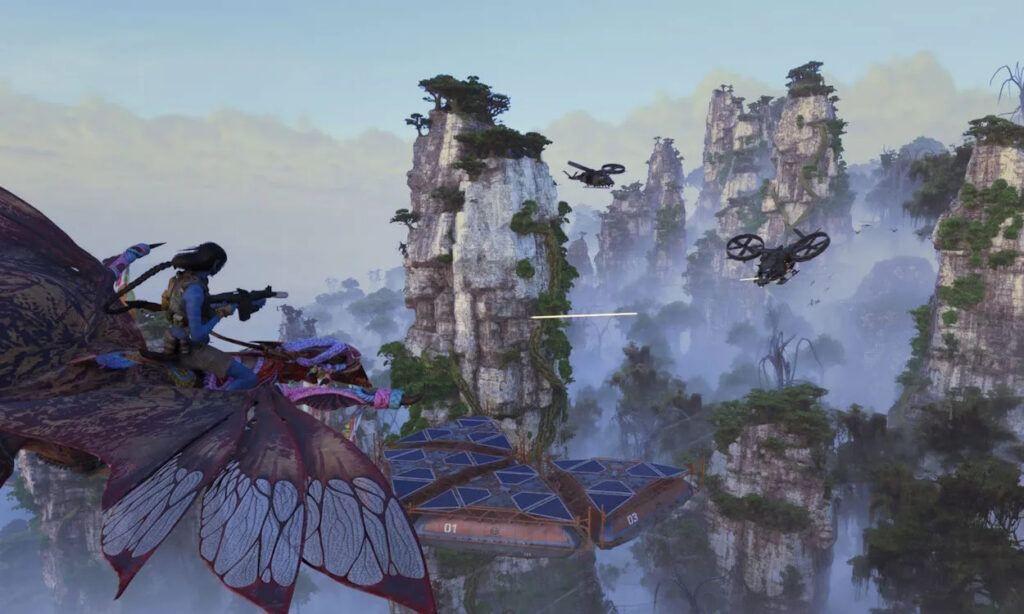

In this game, however, we didn’t find a dedicated toggle for ray tracing. Instead, your lighting options directly influence the quality of ray tracing. Depending on the selected quality setting, the ray tracing quality improves while potentially impacting overall performance.
The game features the NVIDIA DLSS upscaler and AMD FSR to compensate for any performance loss, accompanied by an array of PC-focused settings like shadows and textures. The Snowdrop engine plays a crucial role in the visual appeal of the game. Although the notorious Ubisoft dead-face NPCs persist, they do benefit from the overall improvement in human character quality within the engine.
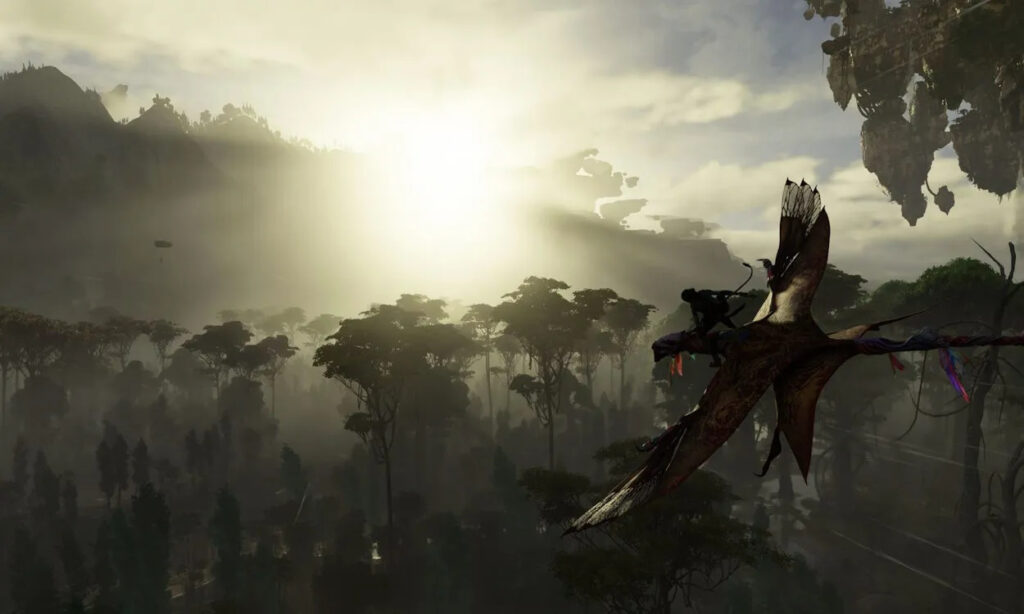

Drawing inspiration from The Division 2, which boasts commendable NPC design, Frontiers of Pandora inherits some of these positive aspects. The Western Frontier, whether in the vibrant daylight or the serene nighttime, is visually stunning. Whether navigating through lush jungles or traversing open plains, each location captivates with its beauty. Whatever magic Massive integrated into the engine, Frontiers of Pandora stands out as one of the visually striking titles from 2023.
In terms of performance, both the CPU and GPU were actively engaged. The CPU load peaked at 74%, while the GPU reached almost maximum capacity at 98%-100%. Frame rates exhibited variations, dropping to 56 FPS in densely vegetated and intricately structured areas, while averaging around 100 FPS in other scenarios. These measurements were taken with DLSS set to max quality. Without DLSS, frame rates were limited to approximately 30-45 frames, dipping even lower during intense moments.
Overall, the game boasts a stunning appearance, thanks to the Snowdrop engine and the lush landscapes of Pandora. If you are equipped with a mid-tier 30-series card or any 40-series card, your performance should be satisfactory.
Verdict: Is Pandora Worth the Trip?
Surprisingly, Avatar: Frontiers of Pandora stands as a commendable canonical movie tie-in, successfully capturing the enchanting essence of one of the most mesmerizing settings in cinematic history. The game pays homage to James Cameron’s vision by delivering a compelling narrative that bridges the gap between the two movies. The combat loop proves satisfying, and the emphasis on exploration introduces additional challenges, showcasing elements that I hope to see more of in future Ubisoft titles.
However, the decision to level-gate story missions through a forced gear system disrupts the game’s flow, and after a while, the novelty wears off. These features undoubtedly detract from the overall experience. Yet, for fans of the movies who also enjoy video games, it’s worth a try. For others, the decision to delve into the game may hinge on your tolerance for gear optimizations and exploration mechanics.
Ubisoft had a sparse lineup in 2023, and similar to Assassin’s Creed Mirage, Avatar: Frontiers of Pandora stands as a commendable offering from the French publisher. With hope for another Avatar title in the future, building on the ideas presented in this game to deliver an even more robust experience. The prospect of a new Avatar movie releasing by 2026 adds to the anticipation for potential future game releases.
Pros and Cons
The Pros
- A valuable contribution to the extended Avatar Universe
- Enjoyable combat loop, with guns providing a sense of empowerment
- Lush and visually stunning Western Frontier of Pandora to explore
- Exploration-heavy gameplay enhances the challenge in a positive manner
The Cons
- Level-gated progression and a forced gear system hinder the flow and overall enjoyment
- Lack of meaningful activities in the long run leaves room for improvement and further content additions
Avatar: Frontiers of Pandora presents a fresh canonical narrative, delving into the challenges faced by the Na’vi inhabitants as they resist the invading RDA forces on Pandora. While the game succeeds in delivering a compelling supplementary storyline to the established universe and provides an enjoyable exploration gameplay experience, the same cannot be said for its progression and activities. Nonetheless, considering its status as a movie tie-in title, Ubisoft has crafted a commendable offering.
Avatar: Frontiers of Pandora




